Roast Guide
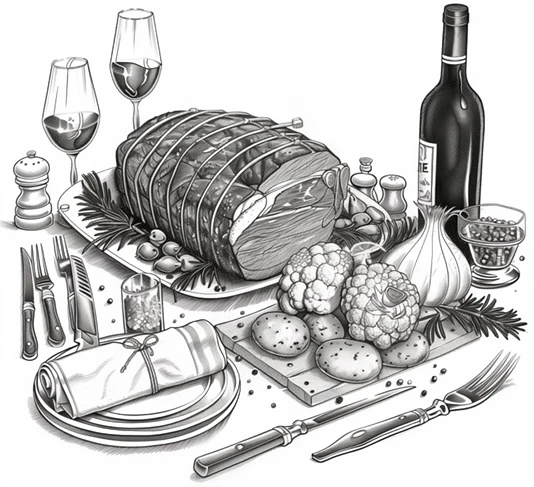
Our Guide To Roasting Beef
Beef is often considered the nations favourite roast, buying direct from your local butcher is a certified way to gain access to their expertise and the time honoured techniques used to produce it.
We take our time with beef, through a process known as dry ageing, humidity and temperature are controlled to achieve a concentrated flavour and tenderness. A process which can not be replicated through supermar-ket offerings.
Your local butcher provides the bridge between the farm and your table, allowing you to choose from a varie-ty of different breeds, different cuts and specific ageing time. The butchers is the gateway to better meat.
Our Guide to beef will help you better understand the flavours and characteristics each joint has to offer.
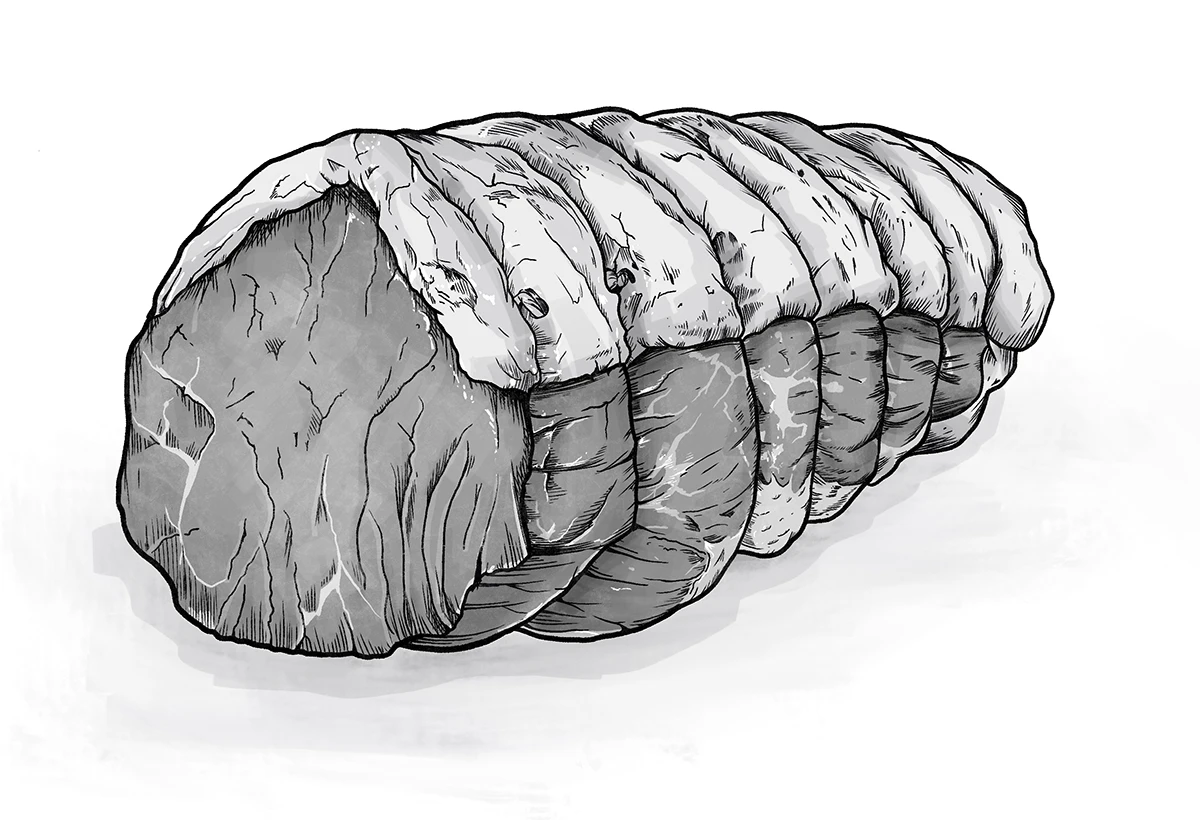
Topside
The complete everyday roast beef joint. A family favourite, good value and delicious. Ideal for serving cold and having leftovers.
Topside is for people who prefer a leaner cut of beef, we add fat to the joint to baste while cooking, but the main part of the joint has very little marbling.
Topside is not as tender as some of the other cuts and will benefit from slicing thinly and serving rare or medium rare.
We recommend allowing approximately 250g per serving.
12 minutes per lb or 25 minutes per kg at 180’ is enough to get the best from Topside.
Always allow time for resting the joint after cooking, this essential process allows the muscle to relax and draws moisture back into the joint helping to keep the results succulent.
If using a meat probe we recommend an internal temp of around 45’ for rare and 50’ for medium rare.
GOOD VALUE—LEAN—25MINS PER KG—TRADITIONAL
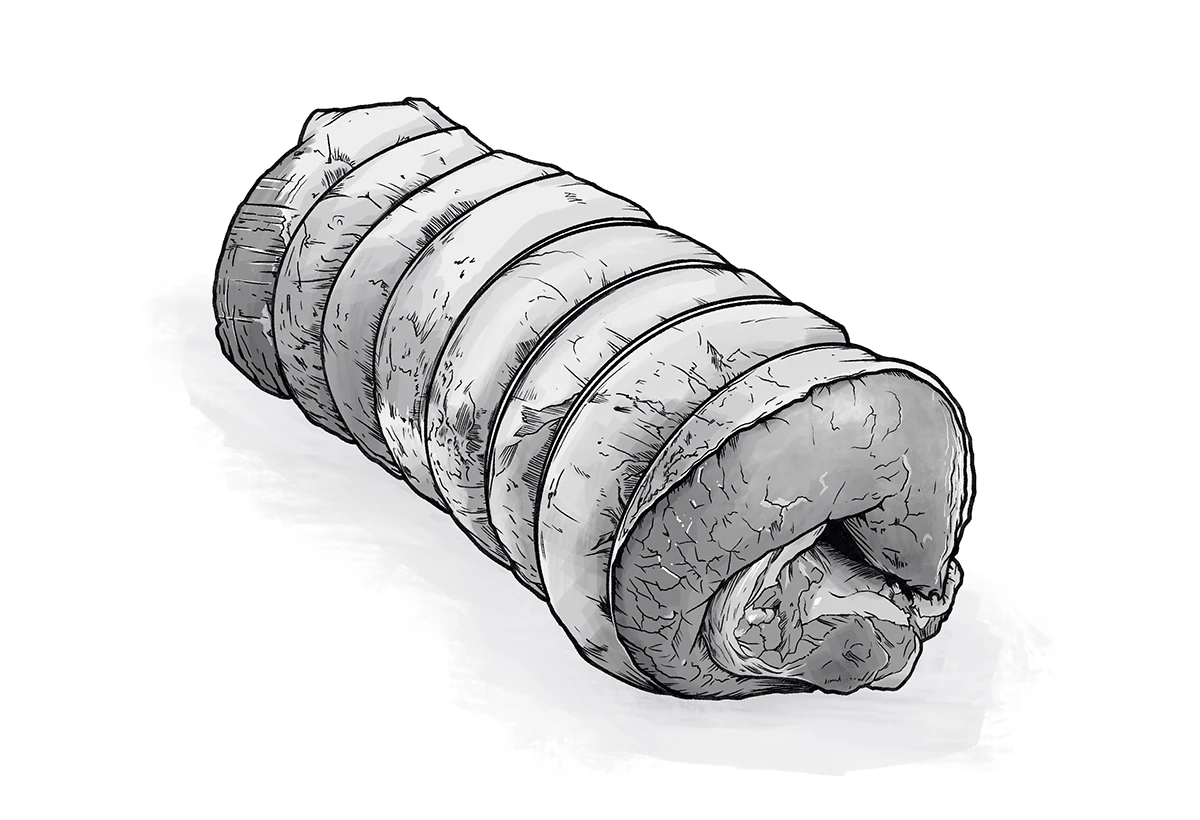
Brisket
Less expensive and often underrated, the Brisket is a wholesome hearty joint with a melt in the mouth finish. Found in many home cooking recipe books and is often associated with nostalgic trips to a grandparent’s kitchen.
Brisket can be cooked in various ways but always includes low and slow cooking. Pot roasted with red wine and beef stock, basted with fat in a hot oven or left to soften over charcoal in a BBQ or Smoker.
The end result will create a texture you could pull apart with your fingertips.
The key is to get the temperate right, timing is not as important. As long as this joints hit a minimum amount of time it can be left anything from 4hrs, to overnight, providing the temperature is set low enough.
We recommend starting on a high 180’ to start the rendering of the fat, this process adds colour and helps to crisp the outer fat, then turn the temperature down to anywhere between 120-145’ and leave for a minimum of 4hrs.
SLOW AND LOW—FULL FLAVOURED—CROWD PLEASER—ECONOMICAL
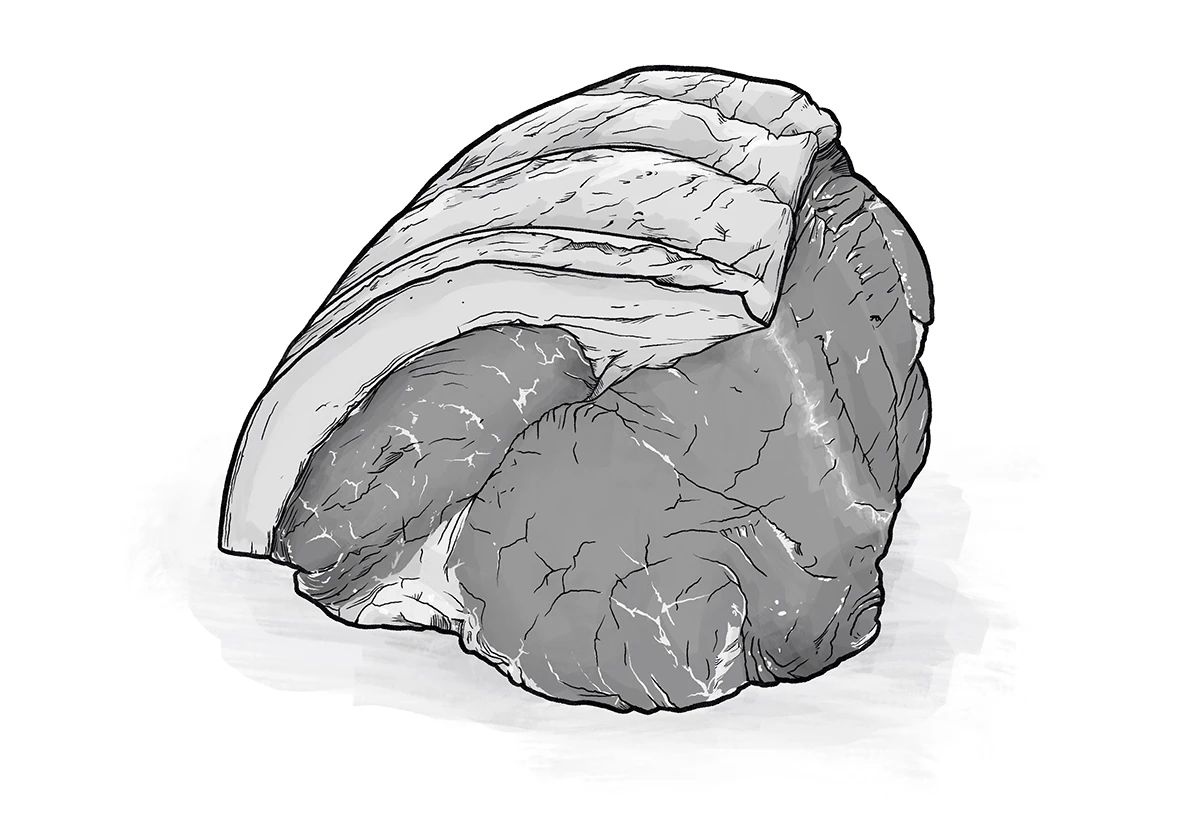
Rump Roast
Not generally considered as high-end as Sirloin and slightly softer than its counterpart Topside, Rump has established itself as a middle-of-road roasting joint, having all the qualities of both.
Rump is marbled enough to have a robust flavour but also lean enough to appeal to everybody’s taste.
We recommend a fast cook, starting at a high 180-200 temperature for the first 20 minutes, to start the rendering process and add colour then reducing the temperature to 170-180. Best served rare/medium.
Always a good idea to intentionally undercook and remove from the heat before serving to allow the joint to relax and gently finish cooking as it rests.
Allow 250g per serving and aim for 20-25 minutes per kg (12-15mins per lb). If using a cooking probe an internal temp of 50’ would give a medium rare result.
TENDER—FULL FLAVOURED—BEST SERVED MEDIUM/RARE
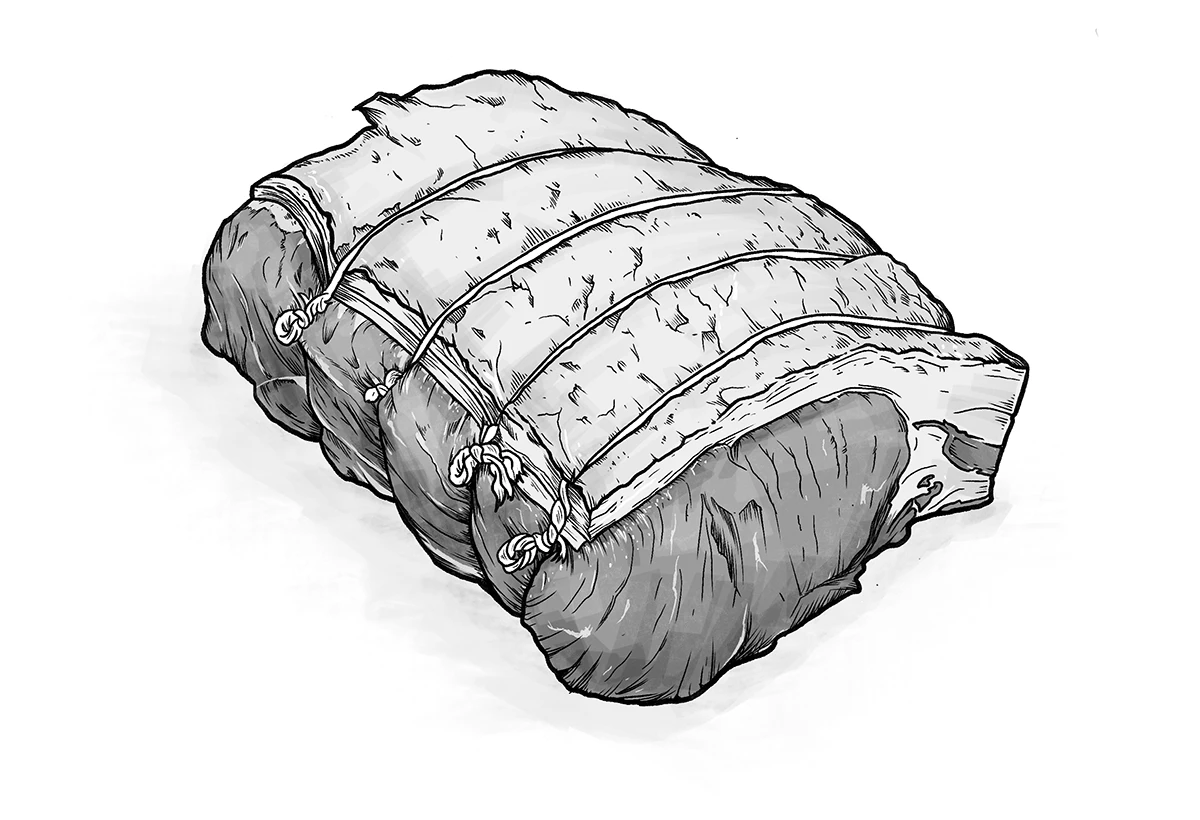
Sirloin
The ultimate roast beef joint. Legend claims this cut received its name from a royal mention where it was knighted for simply being delicious.
What makes sirloin so remarkable is the consistency of the results. Always tender due to the function of the muscle and the amount of natural fat on the back of the cut ensure it always roasts perfectly. A firm favourite for a Christmas feast or a special occasion centrepiece.
We recommend for best results serve Sirloin rare, aim for an internal temperature of 45’, and look to cook for 12-15 minutes per lb or 20-25 per kg. Sirloin will benefit from resting and should sit before carving for at least 10 minutes covered in foil.
SPECIAL OCCASIONS—CONSISTENTLY TENDER—BEST SERVED RARE
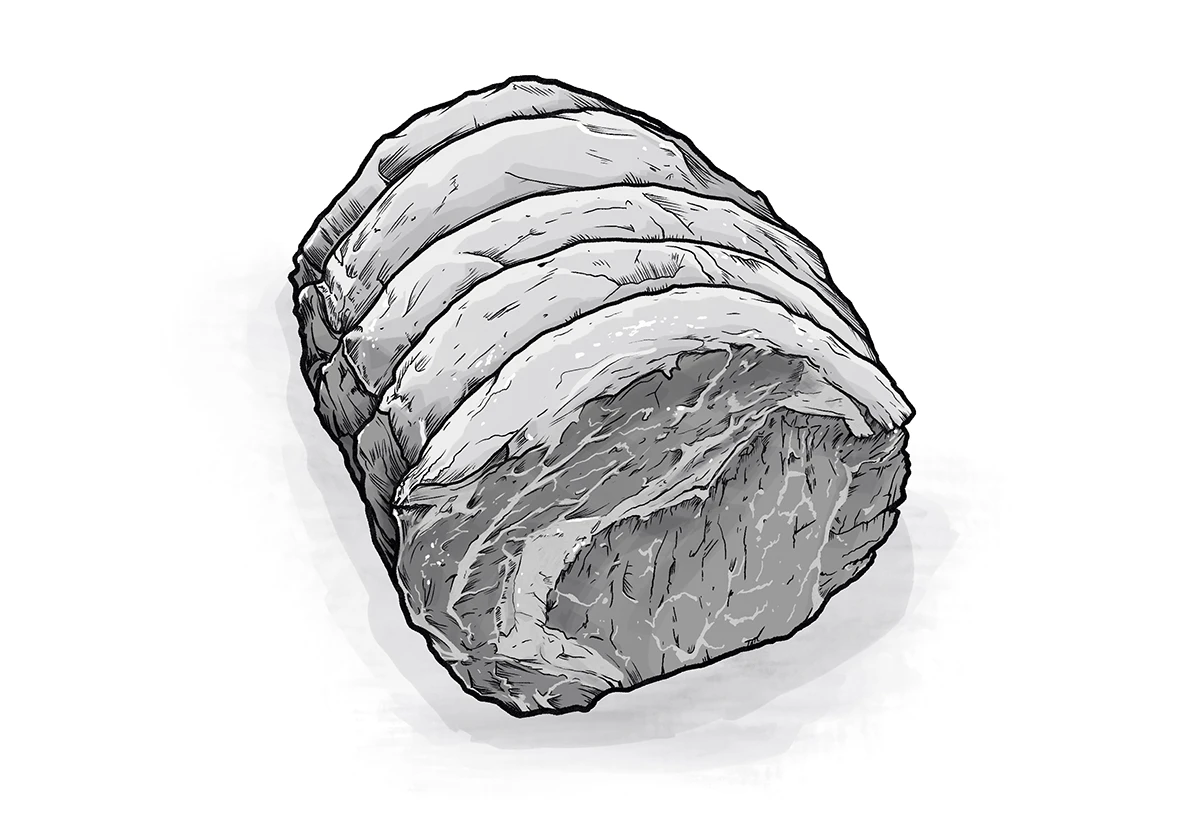
Boneless Rib
Rich, hearty and full flavoured, rib has notably more intermuscular fat, or marbling as we call it, than any other joint.
The fat is essential for basting and although some people could be dissuaded by this extra marbling its important to remember that most, if not all, will render when cooking.
The trick to cooking this joint is to add colour when rendering, we recommend searing the joint first in a hot oven, or a pan, to achieve a crust like appearance on the outside. The aim is to create a contrast in texture by crisping the outside and having a soft centre.
Rib is best served medium and rested after cooking to allow the heat to rise through the joint gently. The perfect rib should have a well seared crust and be a warm blushing pink in the middle.
25 minutes per kg or 15 minutes per lb, aim for an internal temp of around 55-60’. Allow 15 minutes for resting to allow the juices to draw back into the joint.
ROBUST—HEARTY—SERVE MEDIUM—25 MINS PER KG
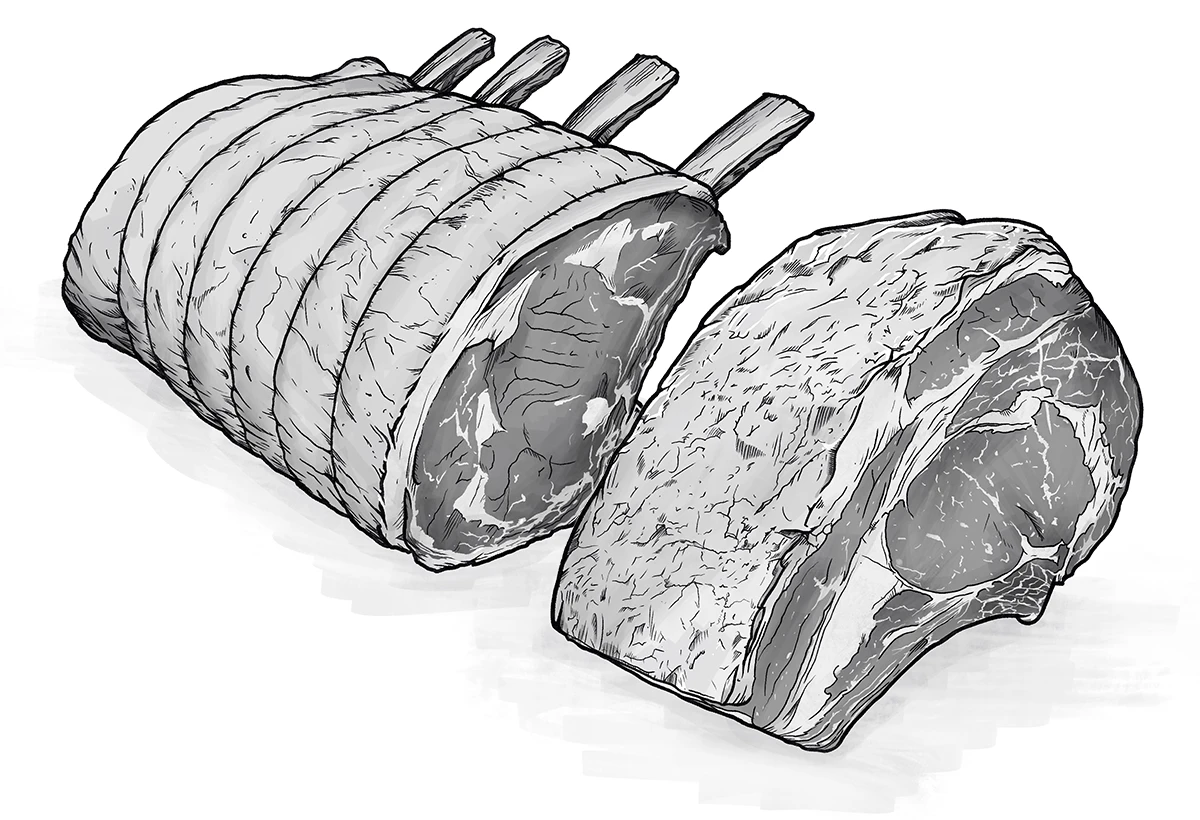
Rib on the bone
A impressive show stopper that brings a sense of theatre to the table. Roasting on the bone gives an added succulence and many people will use the bone to create a stock for the gravy. Bear in mind that when it comes to carving, Bone in rib can prove more troublesome than the bone less version.
As with any well marbled joint we recommend searing the fat first to create a crust on the outside before finishing in the oven. A high temperature oven (180-200) is needed to start the rendering process for the first 20 minutes and then dropping the temperature down to 170-180 for the duration.
We recommend 25 minutes per kg (15 minutes per lb) and allow for 400g per person to equate for the bone weight.
Resting time is essential and remember that the bone conducts much of the heat so bringing out of the oven earlier than expected, allowing for plenty of resting time, will ensure that you don’t overcook your rib.
SHOWSTOPPER—ADDED SUCCULENCE—25 MINS PER KG
